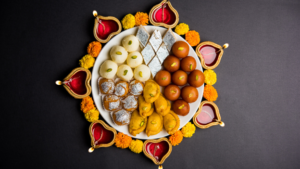The Irresistible Delight of Baklava
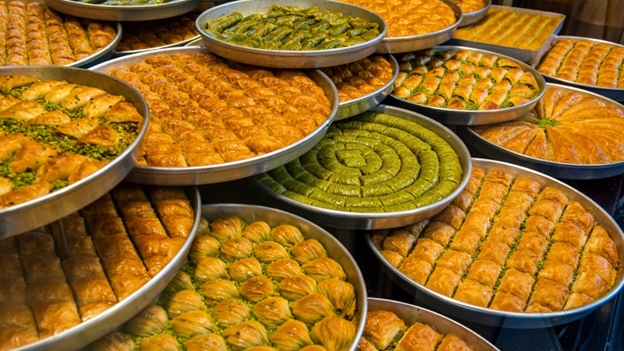
Baklava is a sweet dessert that is popular in many countries in the Middle East, the Mediterranean, and the Balkans. It is made by layering thin sheets of phyllo pastry with chopped nuts and syrup or honey.
The most common nuts used in baklava are walnuts, pistachios, and almonds, although some recipes may include other types of nuts as well.
Baklava, a beloved dessert with its delectable sweetness and crispy texture, is available in diverse flavors across the globe. The variation in taste is attributed to the use of different nuts like pistachios or walnuts in some regions, while in others, distinctive ingredients such as milk mixed with syrup are added to the filo dough after baking, as seen in Sütlü Nuriye.
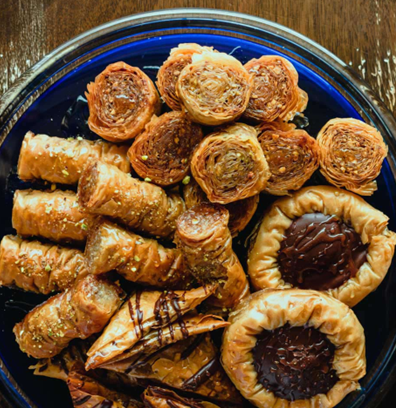
Baklava is typically cut into small, diamond-shaped pieces and served with a cup of tea or coffee. It is often enjoyed during festive occasions and celebrations, such as weddings and religious holidays. Many different variations of baklava exist, each with their own unique twist on the traditional recipe.
Facts about Baklava
While Baklava is commonly known as a delectable dessert, there are some fascinating facts about it that may not be widely known. For instance, it is worth noting that Baklava is the predecessor to the strudel. Although Baklava’s roots are from Turkey, Greece, and the Middle East, it was introduced to Hungary by Turkish conquerors in the 16th century.
November 17th marks the existence of a National Baklava Day, providing a great reason to relish some of your preferred baklava varieties. On this day, individuals either visit their preferred eatery to savor the dessert or try to prepare it themselves, which can be an adventurous task.
Despite not being commonly acknowledged nowadays, Baklava has been significantly linked to various religions. In Greece, it is customarily prepared using thirty-three dough layers, each signifying a year in the life of Christ. Additionally, it is a popular dessert among Muslims during Ramadan and Eid ul-Fitr, as well as during Pascha and Christmas for Christians.
Types of Baklava
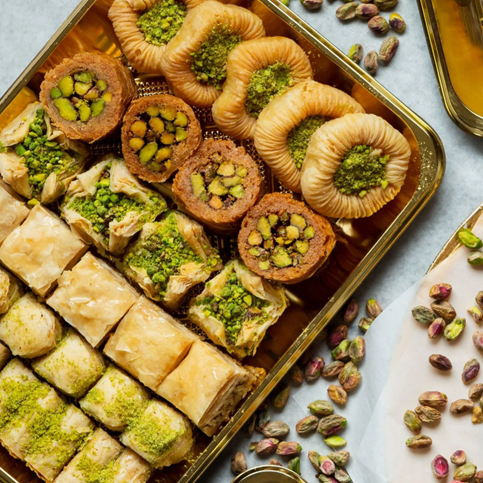
Baklava is a pastry that is popular in many countries, particularly in the Middle East and the Mediterranean. It is typically made of layers of filo pastry filled with chopped nuts and sweetened with syrup or honey. There are many types of baklava, some of which include:
1. Walnut Baklava
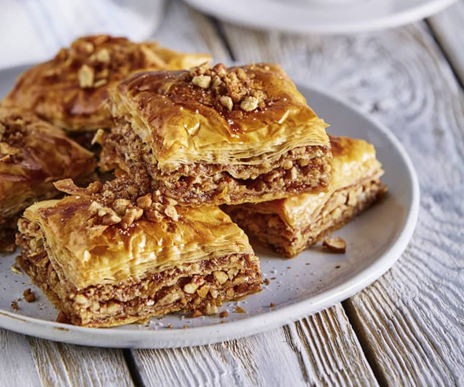
As pistachios are limited to growing in a few countries, walnuts have a much wider range of cultivation. Therefore, walnut baklava has gained immense popularity worldwide. The walnuts are crushed and sprinkled between the layers of filo pastry, imparting a distinctive earthy and tangy flavor that leaves a delicate impression on your taste buds.
2. Sobiyet
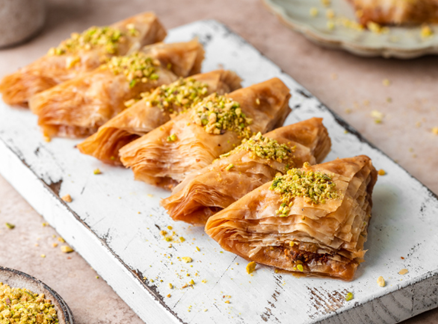
Sobiyet baklava is a type of pastry that is popular in Turkey and other parts of the Middle East. It is made with layers of thin, flaky phyllo dough that are filled with a sweet and nutty mixture of ground pistachios, sugar, and butter. The pastry is then soaked in a syrup made from sugar, water, and lemon juice, which gives it a sweet and tangy flavor.
3. Bulbul Yuvasi
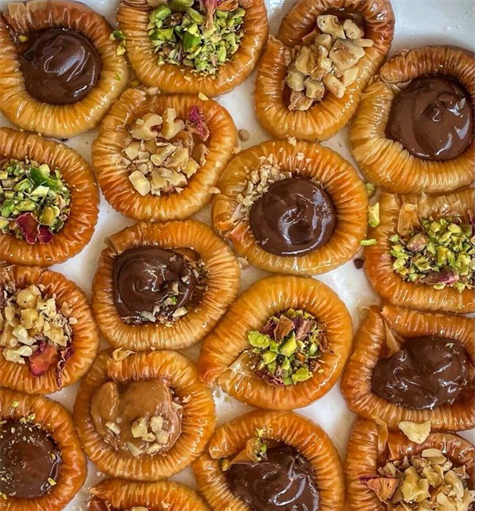
Bülbül yuvası, an Anatolian sweet treat, is prepared using delicate layers of dough that are rolled around a slim rolling pin to create a cylindrical form, as opposed to being stacked on top of each other. The center of this roll is filled with either pistachios or walnuts. This dessert is called “Nightingale’s nest,” owing to its resemblance to a bird’s nest.
4. Pistachio Baklava
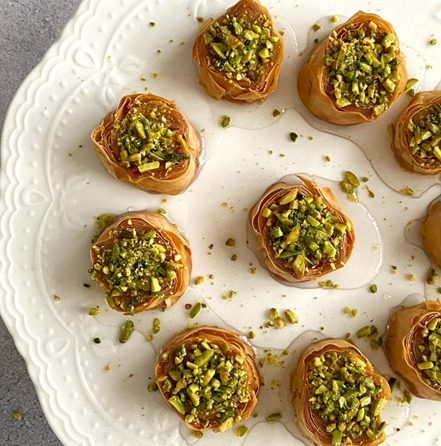
Out of all the varieties of baklava, the classic and well-liked one is pistachio baklava, which is said to have originated in Turkey and Syria. Its delectable taste will entice you with just a single bite! This sweet pastry consists of 40 layers of thin dough (also known as phyllo) that are packed with finely ground pistachios.
5. Dry Baklava
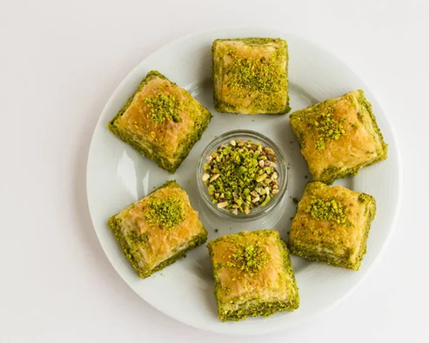
Dry baklava has a denser syrup than other varieties, which helps it last longer without spoiling quickly. While traditional baklava may begin to lose its delicious and fresh taste after 3-5 days due to sugar crystallization, dry baklava can be enjoyed for up to 30 days without going bad or crystallizing.


